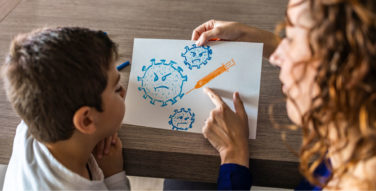In a transparent world, the “authentic” rules of branding apply to every industry.
It looked authentic at first, but it wasn’t. The chipping paint and rickety spiral staircase gave it away. Steve Jobs would have never tolerated such a lack of attention to detail. Sure, companies trying to get out in front of leading brands by copying them has been around forever, be it mimicking names or packaging or, more overtly, knocking off the actual luxurious pocketbooks and watches. But the recent news story about the greatest brand knock-off attempt of all time, the building of a brick and mortar “Apple” store in China, really took the cake. In an age in which everything is transparent and things are easier to check out with the aid of friends, family and total strangers on Twitter and YouTube, copying the leader is not the smartest tactic.
Thinking further about the notion of authenticity in a see-all, share-all world, I wondered how it applied to the pharmaceutical industry, where generic offerings sit side-by-side on store shelves with major brand name products, looking virtually identical. I turned to Jed Beitler, Chairman and CEO of Sudler & Hennessey, a leading healthcare communications firm (and, in the spirit of transparency, part of the same WPP group of companies for whom I work) for a bit of enlightenment on the topic.
NO UNIVERSAL TRUTH
“The pharmaceutical market is in a state of flux,” he began our conversation. “It’s not just a matter of generic versus brand names. We’re also looking at how the multi-national players like Pfizer, Sanofi, Merck, and Novartis are dealing with what we call the ‘pharmemerging’ markets — China, India, Russia, Indonesia, Brazil, Egypt, Turkey, or any place that isn’t North America or Western Europe. There is no universal truth. The competitive set is not the same from country to country and what works in one country may not work in another, be it for a branded name or a generic. There’s no Holy Grail. You’ve got to play to local needs and ensure that whatever you do, your product is seen as the better, most trusted name in that given market.”
As we talked, I realized that what Jed was saying was exactly what I deal with in my work with consumer packaged-good brands. What do you need to do to become the better, most trusted name in any given market? You make sure your company crafts a clear and unique identity for its brand and then follows through on the promise with consistent actions and behavior.
STANDING OUT
First of all, in such a hyper-competitive market, it can be a real challenge to establish a differentiated meaning for your brand that the consumers care about and find relevant. It’s equally challenging to make this simple to understand. The people who create the branding need to fully comprehend what their brand stands for so that everything associated with the brand is in alignment with its promise, so buyers can tell in an instant what makes it different and better.
A great example of a brand with a clear identity that proves itself on the, uh, field of play is Gatorade. It’s a drink that was created by scientists specifically for athletes to mitigate the dehydration which can affect the ability to perform. The Gatorade brand is based on improving athletic performance and having the science to prove it. Even with the glut of new “power drinks” and super waters on the market, Gatorade continues to stand apart because the company claimed a point of difference to which no other beverage company can lay claim.
And this simple, clearly-focused idea lends itself to branding associations iconic—the packaging—and behavioral. Both professional and Saturday-afternoon-only athletes swear by its authentic ability to hydrate and improve performance. And that authenticity is essential. As competition gets only fiercer on a global basis, companies are getting equally fierce in their search for brand identities that cut through and catch on. What some don’t seem to realize is that the transparency dynamic is just as fierce. While companies may try copying the leader to get ahead, chances are they’ll be spotted and outed fast and furiously. Just as having a simple, clear idea is a basic ground rule for successful branding so, too, is the ability to authenticate everything associated with the brand, from the look and logo on the store shelf, to the behavior of those behind the counter, to the product’s performance.
As Jed stated, it doesn’t matter if the product is a generic version or a brand-name version. The point is to make sure it’s the best it can be for the market it serves and at the price-point it’s meant to address. In a world where authenticity is getting easier to check out, keeping a brand honest and trustworthy is the key to success for all industries, be it consumer packaged goods or pharmaceutical.






